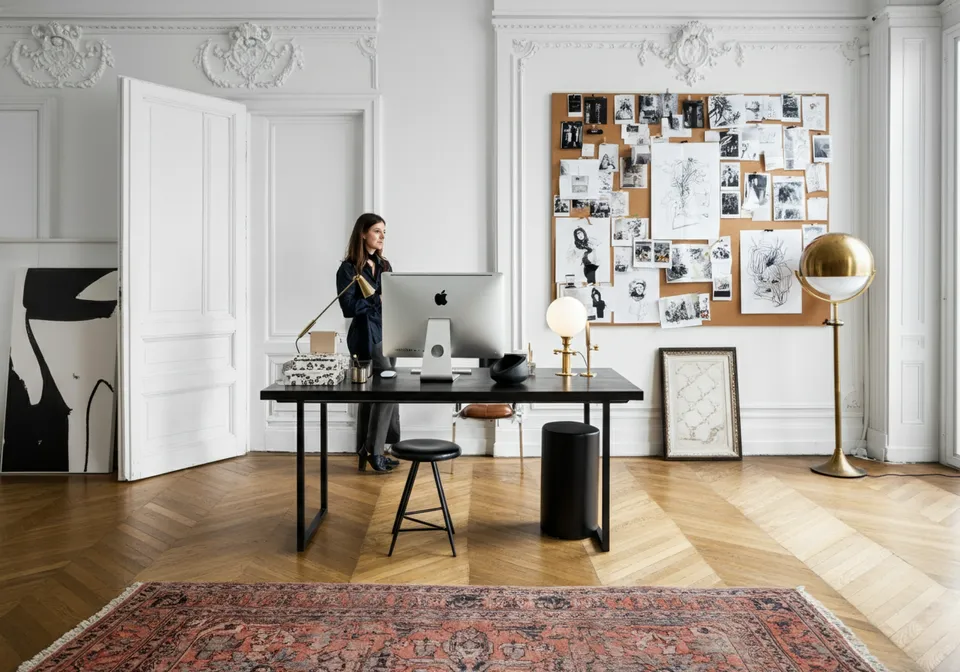
The world of interior design is filled with creativity and opportunity, but relying solely on client projects can leave your business vulnerable during economic downturns. A recent question from the design community addresses this concern perfectly:
“I want to build a business that can withstand any economic downturn. How do other designers monetize their design expertise beyond client projects, like e-courses or consultations? Do they write books? Get licensing deals? Have any of you found success with specific platforms or formats?”
This is a vital conversation. Diversifying revenue streams in interior design not only builds financial stability but also allows designers to explore their expertise in innovative ways. Let’s explore actionable ideas for creating multiple income streams, with insights from designers who are already doing it successfully.
Why Diversification Matters in Interior Design
Diversifying revenue streams isn’t just a trendy business buzzword; it’s a proven strategy for long-term success. Here’s why:
- Economic Resilience: Multiple income sources protect your business when client demand fluctuates.
- Creative Freedom: Diversification allows you to explore passions outside of traditional design work.
- Scalability: Passive income streams, like courses or digital products, let you earn without trading time for money.
By creating a business portfolio of revenue streams, you can weather economic downturns while staying creatively fulfilled.
Ideas for Diversifying Revenue Streams
1. Online Courses and Workshops
Sharing your expertise through online courses or workshops is a popular way to generate passive income. Platforms like Teachable, Kajabi, and Skillshare make it easy to create and sell courses.
Popular Topics:
- How to decorate like a pro
- Basics of AutoCAD or SketchUp
- Styling homes for sale
2. Consulting Services
If you’re an established designer, consider offering consulting services for aspiring designers or homeowners who want expert advice without committing to full-service design. Virtual consultations have gained popularity, especially post-pandemic.
3. Write a Book or Workbook
Writing a book is a great way to establish authority in your field while creating a source of income. Some designers expand on their expertise with accompanying workbooks or journals, which can be sold as standalone products or as part of a course.
4. Develop a Product Line
Creating a product line—such as furniture, decor, or textiles—can be lucrative, though it requires upfront investment. Successful designers often partner with manufacturers or retailers to bring their vision to life.
5. Start a Retail Showroom or Online Store
Curating a showroom or e-commerce platform lets you monetize your design aesthetic directly. Showrooms can double as event spaces, and online stores expand your reach to a global audience.
6. Blogging and Social Media Monetization
Turn your passion for storytelling into income through blogs, YouTube channels, or Instagram sponsorships. Many platforms offer monetization options for creators with engaged audiences.
7. Expand into Real Estate
Some designers diversify by flipping homes, managing rental properties, or offering staging services. These ventures often align naturally with interior design expertise.
8. Licensing Deals
Partnering with brands to license your designs is another option, though it’s essential to research the financial and ethical implications. Ensure the deal aligns with your goals and values, and understand the time and investment required.
Insights from the Community
Designers are finding creative ways to diversify income streams. Here are some detailed insights from community members who’ve made it work:
- @returnoninteriors : “I look at my business like a portfolio with different revenue streams. I sell courses, do design work, own rental properties, flip homes, and occasionally represent buyers purchasing real estate. I have a blog and do some consulting as well. I also love website design (thank you Covid and time to learn!), webinars, and more! So much you can do!”
- @eclecticdesign.co: “I follow a bunch of self-made business influencers and keep hearing this ‘7 sources of income’ and ‘diversification’ jargon, and it’s really motivated me to do so. It’s still a huge work in progress, but I’m writing a book, workbook, and course that can be sold separately and together. I also have three different service options—consulting, conceptual, and full service—which helps.This year, we just started a staging service geared toward builders who hire us to design spec homes. In past years, I have tutored local and virtual design students in AutoCAD. We have a small online store. I definitely want to monetize our blog and social platforms, and I want to do more research into licensing.”
- @kingswaycointeriors: “Beyond design, I also offer exclusively project management services. There are lots of times people are willing to renovate and pay construction costs but not for the luxury item of a designer.I also represent buyers and sellers in California real estate transactions, occasionally do set design for small productions, flip property where I can, and rent my home as a filming location. I’ve learned that in order to be sustainably profitable, diversifying revenue is mandatory.”
These examples show how designers are combining passion, creativity, and strategy to build resilient businesses.
Steps to Get Started
1. Assess Your Skills and Interests
Start by identifying areas where you excel or have a passion. Whether it’s teaching, creating content, or developing products, choose something that aligns with your strengths.
2. Start Small
You don’t need to launch multiple ventures at once. Begin with one idea, like offering consultations or writing a book, and expand gradually.
3. Invest in Learning
If you’re exploring new territory, invest in courses or mentors to shorten your learning curve. For example, platforms like MasterClass or Coursera offer business and marketing insights for entrepreneurs.
4. Build a Marketing Plan
Promote your new offerings through social media, email marketing, and partnerships. Consistent branding helps establish credibility across all your revenue streams.
Final Thoughts
Diversifying revenue streams in interior design is not only smart—it’s essential for long-term success. By exploring options like courses, consulting, real estate, or product development, you can build a business that thrives in any economic climate.
What strategies have worked for you in creating new income streams? Share your insights in the comments—I’d love to hear your ideas!

